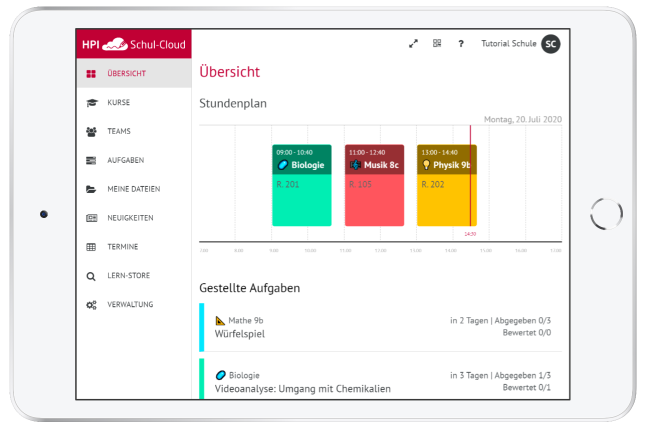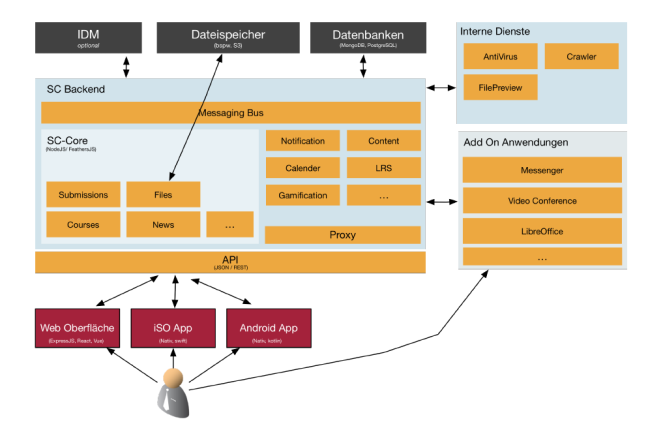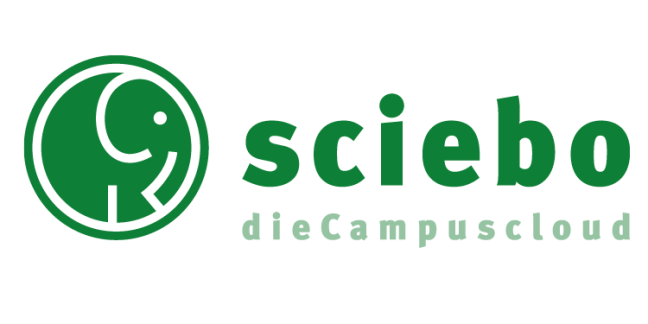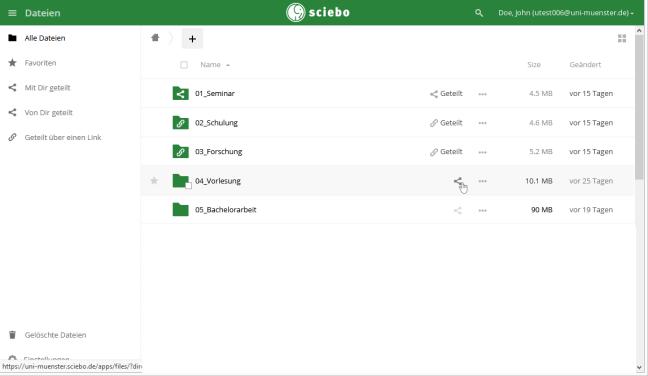Introduction
Open education, the use of open data, and open research are subjects that have been propelled into the spotlight by the COVID-19 crisis and the sudden rise of remote education. In schools, universities and research centres, the use of open source has gained momentum in recent years and even more so during the pandemic, fuelling innovation in education and offering flexibility to institutions that adopt it.
Although the digitalisation of education is an integral part of European digital transformation processes, the use of digital devices and teaching methods can pose major administrative and financial challenges. Hardware and software are often limited and/or outdated, and do not necessarily comply with current data and user protection regulations. To face these challenges, many initiatives are being developed by stakeholders in the educational domain, including public administrations.
In Germany, education is mainly governed by the federal states, called Länder. The states independently define the content of their school curriculum and the structural organisation of schools. In fact, the federal government does not impose any uniform requirements for all states in this area, as it may complicate the process of digitalisation. Instead, the federal government provides funding and helps to foster international cooperation through the Federal Ministry of Education and Research. The local level (i.e. the municipalities and cities) is responsible for the procurement of school equipment. This division of responsibilities across three levels of government, inherent to Germany's decentralisation, greatly influences the digitalisation of education in the country.
This study focuses on two cases of the use of open source cloud technology in Germany: the HPI Schul-Cloud, a solution mainly used by primary and secondary schools nationwide, and Sciebo, which is developed and used by the academic and research community in the State of North Rhine-Westphalia. Open source cloud technology refers to any type of cloud service or solution built on the basis of open source software or technologies. In addition to giving an overview on how these two open source cloud solutions are implemented at different educational levels, this study will also present how German public administrations are involved in their development.
OSOR spoke with Christoph Meinel (Director and CEO of HPI, HPI Schul-Cloud), Lennart Hofeditz (University of Duisburg-Essen, Sciebo), as well as Dominik Rudolph, Raimund Vogl and Holger Angenent (IT centre of the Münster University, Sciebo).
HPI Schul-Cloud

The HPI Schul-Cloud, or HPI School Cloud in English, is an open source learning and teaching cloud infrastructure developed by the Hasso Plattner Institute (HPI) in collaboration with MINT-EC, the national Excellence School Network, which gathers more than 300 schools in Germany. Developed in September 2016, this initiative is supported by the German Federal Ministry for Research and Education. As of September 2021, the solution is used by almost 4,000 schools and 1.4 million users.
The purpose of this project is to enhance the use of virtual teaching and to support the digital transformation of the German education sector. The HPI Schul-Cloud creates the technical basis for teachers and students to provide modern digital teaching and learning via any device, without any prior technical knowledge. The HPI Schul-Cloud enables easy access to professionally-maintained applications, a wide variety of digital media, the networking of different learning locations and the legally secure use of communication and collaboration tools.
The HPI Schul-Cloud is entirely open source, developed under the GPL license, and the source code is available on their GitHub page.
Key milestones of the development of HPI Schul-Cloud
In 2016, the HPI launched a 5-month concept phase to design the technical approach for the implementation of the idea of a school cloud, developed during the HPI annual and national IT summit.
In May 2017, the pilot phase was launched, giving 27 schools from 13 different federal states and some members of the MINT-EC network the opportunity to test and use the HPI Schul-Cloud. During the next year, the pilot phase was gradually extended to all schools from the MINT-EC network.
The roll-out phase was conducted between May 2018 and July 2021. During this phase, three state-wide solutions were implemented and tested in the federal states of Brandenburg, Lower Saxony, and Thuringia, each with its own state-specific brand identity. During this phase, the number of partner schools and users increased significantly, reaching around 4,000 schools and almost 1.4 million users in Germany and in German schools abroad.
A new phase of the project started in July 2021, marking the end of HPI’s involvement in the software development. At that point, the project was handed over to a state-owned company, Dataport, to continue the development of HPI Schul-Cloud and to ensure its daily operation. The Dataport team consists of 45 people and has been joined by part of the former team that developed the HPI Schul-Cloud to ensure a smooth organisational transition.
HPI Schul-Cloud: Features and cloud architecture

Since the launch of the HPI Schul-Cloud, the HPI team gradually integrated various features into the cloud-based platform, allowing teachers, students and parents to access many useful educational features in one single place. The features of HPI Schul-Cloud can be summarised in three main areas:
- Communication, collaboration and organisation: shared calendar, file storing and sharing, ‘classic’ office functions allowing simultaneous collaboration of several users (with Collabora Office), dashboard and overview page, voting tools and team’s function allowing working groups, messaging and cross-school collaboration.
- Content finding, sharing and rating: large content access through LernStore, which gathers more than one million pieces of open content from various providers.
- Learning and teaching support: editor functions for the creation of courses and self-study sessions (integrating text, images, links or even videos), integration of numerous interactive learning tools (Etherpad, Geogebra, CodeOcean, etc.), assignment system for tasks and homework, submission deadlines and feedback/evaluation, and school-year planner (including a visualisation tool).
The HPI School Cloud brings together services and content from a wide variety of sources, acting as a Single Sign-On (SSO) provider for tools and interactive learning materials from third-party providers.

As illustrated in Figure 2, an infographic which has been retrieved from a HPI Schul-Cloud technical report, the user can access the HPI Schul-Cloud from any device as it is supported on Web, iOS and Android App. The Application Programming Interface (API) allows users to access the integrated functionalities of the HPI Schul-Cloud platform, such as the cloud service, the calendar functionality, or the internal notification system. The user can also add other software, referred to in the infographic as an Add-On, according to their needs or activities.
The foundation of the HPI Schul-Cloud solution is its cloud infrastructure. Teachers’ and students’ data can be easily imported, synchronised, and then accessed in many ways (Lightweight Directory Access Protocol [LDAP], Single Sign-On [SSO], Comma Separated Values [CSV]). The adoption of standards, such as Learning Tools Interoperability (LTI), ensures a smooth transfer of data through the different functionalities of the HPI Schul-Cloud. For example, class structures or courses evaluation created by teachers are directly integrated in the cloud, assuring the interoperability of the system between various programmes. Third-party tools and learning content can be stored by users in a modular, service-oriented architecture via their APIs which can be connected to the HPI School-Cloud, without users having to log-in again. Indeed, users only need to log in to the HPI Schul-Cloud to access all open source software offered. To protect users’ data, the connection to third-party tools is systematically anonymised or pseudonymised. Finally, the HPI Schul-Cloud provides a files storage function, where users can upload any documents for review.
HPI collaboration with public administrations and schools
Originally, the HPI Schul-Cloud was developed by HPI under the supervision of the German Federal Ministry for Research and Education. This ministry funded this project as part of the “Education Offensive for the Digital Knowledge Society” called DigitalPakt Schule, which considers digital infrastructures as a prerequisite for the implementation of digital education in schools. The DigitalPakt Schule also funded other projects undertaken by HPI, such as the Open HPI platform, an online learning platform for topics related to information technology (IT) and innovation. In addition, the creation of the three state-specific versions was also partially funded by the federal government and by the states. In addition to receiving funding, states that choose to create their version of the HPI Schul-Cloud could select personalised configurations adapted to the needs of their curriculum. The cooperation between HPI and public authorities was mainly financial and it provided HPI with an extensive national network of schools. HPI also kept public administrations informed on the latest developments of their project, but the majority of collaborations have been with schools.
Every step of the development of the solution followed a design-thinking approach, whereby user needs were continuously identified and then validated through new iterations of the HPI-Schul Cloud. By developing the solution in close collaboration with schools, HPI has built a strong reputation across school networks in each state, and they have been able to build an extensive knowledge of this environment which, which, in turn, was a key factor in attracting more schools. This approach will be continued by Dataport, the organization which is now responsible for further development, maintenance, and user support services.
The impact of COVID-19 on the HPI Schul-Cloud
The original plan of HPI was to finalise the development of its solution by July 2021. In early 2020, when the COVID-19 crisis started, the federal government asked HPI to offer the solution to every school in Germany, even if the solution was not ready. Faced with this urgency, HPI opted to adapt the infrastructure’s scalability for large-scale use in schools throughout Germany, instead of following the original plan of finalising the development of the solution.
Due to these unpredictable conditions, the timeframe for the finished product was extended and the development of HPI Schul-Cloud’s scalability was accelerated, representing a large challenge for the HPI team. However, it also resulted in a significant increase in the use of the solution. During the pandemic, the solution was able to run more than 60,000 video conferences in parallel thanks to the rapid scale-up of the IT system. Today, through this accelerated development phase, the HPI Schul-Cloud has become a professional and fully stable open source solution.
Sciebo

Sciebo, derived from "science box”, is an open source cloud storage solution, created in 2015 and developed by a consortium of more than 30 technical colleges, research centres and universities in the German State of North Rhine-Westphalia (NRW). Sciebo is used by this community exclusively for educational purposes, namely research, teaching and study. It is a collaborative platform for research data management, enabling the storage and transfer of research material between institutions. It also represents an alternative to commercial cloud services and supports an open vision of inter-university research.
In addition to promoting open research, Sciebo also aims to ensure that it is compliant with data protection regulation. Sciebo’s data are stored and processed exclusively at three locations in North Rhine-Westphalia including Münster, Bonn and Duisburg-Essen and only managed by the IT centre of the University of Münster. This means that data are subject to the strict level of protection provided by German data protection laws.
Sciebo’s cloud is based on a commercial license of ownCloud and the platform itself was developed in open source under the AGPL license by the Sciebo IT team.
Key milestones of the development of Sciebo
In 2015, the lack of a public cloud for students and researchers in Germany was the catalyst for the launch of the project. At that time, some universities had their own cloud systems, but they were not interoperable with other universities’ systems. Prof. Dr. Stefan Stieglitz and Dr. Vogl were working at the University of Münster and began to explore the creation of Sciebo. With a handful of people, the original Sciebo team conducted case studies, while computer scientists and developers helped to design the cloud solution. Sciebo was officially launched in February 2015, allowing universal access to files for employees, teachers, and students from more than 10 universities in the state of NRW.
Over time, the number of universities, technical colleges and research centres using Sciebo has grown to 30 educational institutions. Currently, Sciebo is managed by a small team of three people at the IT centre of the University of Münster and the core team, which includes the consortium leaders and two boards (the Scientific Advisory Board and the Legal and Security Advisory Board) composed of members from several universities.
Beyond the cloud services offered by Sciebo, the development team is also working on adjacent projects that aim to increase the interoperability of Sciebo. The first project, Sciebo RDS (Research Data Services), is funded by the German Research Foundation (DFG). It has set itself the goal of bringing low-threshold services and tools from research data management and scientific analysis to Sciebo. The second project is CS3MESH4EOSC, a three-year EU-funded project addressing the challenges of file and application service fragmentation, digital sovereignty and the application of FAIR principles (Findability, Accessibility, Interoperability, and Reusability) in research in Europe. For this project, seven major data services (SURFdrive, CERNBox, PSNCBox, CloudSTOR, Sciebo, owncloud@CESNET, SWITCHdrive and ScienceData) will be combined into ScienceMesh, a federated service mesh providing a frictionless collaboration platform for users (researchers, engineers, students and staff).
The next step in Sciebo’s development will be to involve universities from other federal states in the project, or possibly other EU partners.
Sciebo: Features and cloud architecture

The functionalities offered by Sciebo are those of a classic cloud solution:
- Storage: Each user has access to 30 GB storage space. University employees can also activate a data volume of up to 500 GB for administrative task management.
- Synchronisation: Files can be synchronised automatically across end devices (such as laptops, smartphones and tablets) and can be accessed worldwide.
- Cooperation/Files sharing: Files and folders can be shared with other users of every partner institution, as well as external users. If authorised, external users can upload files to a shared folder. A password and expiry date can be set for each share. To enable simultaneous and collaborative working, Sciebo includes an integrated online editor for text, presentations and spreadsheets. The editor also has a review function (visual marking of the edited elements), a comment function, and a chat function.
- Project boxes: Project boxes are storage spaces for workgroups dealing with very large amounts of data (up to 2 TB). They are particularly suitable for long-term projects (two years or more) with a project team that may change over time.
- Collective work on Office documents: Office documents (Microsoft Office and LibreOffice formats) can be edited collectively via the web front-end of the cloud storage service.
Sciebo’s cloud architecture is based on the Enterprise version of ownCloud. OwnCloud is an open source project launched in 2010 in Germany, offering its users an ownCloud server application, which can be installed on any server or website. In the paid Enterprise version used by Sciebo, users not only benefit from global support, but also from access to exclusive modules, such as access rights and group management, Collabora Online for ownCloud (file editor) or file version management and locking. With the Enterprise version, Sciebo was also able to redesign the ownCloud interface and integrate its own branding. Sciebo is currently in the process of migrating the OwnCloud software from older to new hardware after having received additional funding from the NRW State. The new hardware will use Kubernetes, an open source system for automating the deployment, scaling and management of containerised applications, which will bring increased reliability to Sciebo.
As Sciebo's cloud is based on ownCloud, its development is dependent on the progress of this cloud software. It allows Sciebo to benefit from two important advantages: professional maintenance and user support services. In fact, Sciebo’s maintenance and user support services are divided across three levels depending on the complexity and the subject of the reported problem. First line support is provided by the IT centres of the partner institutions, second line support is provided by Sciebo’s IT team and, if the latter cannot provide a solution, a request is sent to ownCloud services. With more than 200,000 registered users, it is not possible for a team of three people to provide direct first-line support to all users. Having this structure is more effective and has led to the creation of better documentation, which in turn means that users have less need to ask for support.
Sciebo collaboration with public administrations, technical colleges, research centres and universities
Sciebo’s relationship with the federal state is mainly financial. The project is entirely funded by the federal state and Sciebo is currently in the second of its five-year funding phase. Sciebo’s team received EUR 1 Million to buy hardware, pay for the licences and cover the salaries of the IT team maintaining the platform and creating the tools for managing it. Regarding the funding, Sciebo will have to draft a new proposal to be submitted to the state after the five-year period or they will have to find another source of income, potentially by asking universities to contribute to the cost of solution maintenance. The Sciebo team is also reporting on the project’s development and milestones to the state of NRW.
Sciebo is first and foremost a solution developed by universities for universities, involving constant collaboration between the Sciebo team, universities, and other educational institutions. The decision to develop or include new features is mostly user-driven as feedback is essential for the proper functioning and development of the solution. For instance, Sciebo-Day is held on an annual basis for technical representatives from different universities to come together, share their user feedback and discuss new technical aspects. Sciebo also regularly conducts user studies. In 2015, 12,000 users participated in such a study. In addition, when a person uses Sciebo for the first time, they are required to participate in a short two-part satisfaction survey, the second part of which is held six months after joining.
The impact of the COVID-19 crisis on Sciebo
For Sciebo, there was no visible impact caused by the pandemic. Since its creation, the cloud platform and users have always collaborated online. During the COVID-19 pandemic, people began to meet virtually and digitally more frequently but for Sciebo users, not much has changed. Sciebo is not used to hosting in-person educational activities such as live courses. Rather, they support and facilitate these activities through data storage and exchange. No visible increase in its use has been observed as a result of the pandemic.
Open source cloud services in education: Benefits and challenges
Benefits of using an open source cloud in education
According to the feedback from HPI Schul-Cloud and Sciebo’s team members, there are multiple benefits in using open source cloud services in education.
The main benefit emphasised by all is data protection and compliance with European and national regulations, such as the General Data Protection Regulation (GDPR). For both solutions, the use of open source allows them to manage user data, which is entirely stored and processed in Germany. As a result, all data is protected by German law, which is particularly strict on this matter. In addition, trust in their services is much higher than in other proprietary solutions, which is one of their key strengths.
By providing an effective data management solution for educational institutions that meets their needs and is scalable, these services encourage the digital transition in the education sector. In addition to promoting the digitalisation of educational activities, users can develop their eSkills. For instance, HPI created a platform for teachers to learn how to use the HPI Schul-Cloud, Lerner.Cloud. This platform also offers online courses on programming for students.
The use of open source, even for a cloud service, allows institutions to develop modular and collaborative tools which can be adapted to the needs of each university, research centre or school and in the case of HPI Schul-Cloud, to the needs of each class. The sharing of files or data between institutions facilitates exchanges between schools and promotes a more open vision of research.
Challenges in the development of a German open source cloud in education
Contrary to what might be expected, the technicality of using an open source cloud is not a barrier to the use of this service for teachers or students.
Competition with more traditional cloud solutions, such as Google Drive or Dropbox, can be a barrier to extending the use of open source cloud services, especially for Sciebo. Users are often accustomed to using private commercial services, which are feature-rich and focus heavily on user experience and interface design. Despite their efforts to improve their interface and to encourage students to use Sciebo, retention of active users remains a challenge.
The complexity arising from the decentralisation of education in Germany is also a challenge. The states cultivate their independence from the federal government and may be reluctant to accept nation-wide solutions. This factor is particularly complex for HPI Schul-Cloud which aims to integrate as many schools as possible in its network and maintain a close relationship with the federal government.
Highlights from HPI Schul-Cloud and Sciebo
The members of HPI Schul-Cloud and Sciebo highlighted several key points which could potentially serve as good practices for the creation of similar cloud services:
- Communication and marketing: For both solutions, promotion, as well as branding and building a customer base, are aspects that should not be neglected when creating an open source cloud service. This may include participating in conferences, being active on social media or even publishing case studies online. Communicating to as wide an audience as possible will ensure that the knowledge of the solution is not limited to technical profiles. For instance, Sciebo has its own brand and publishes content on social media platforms (YouTube, Facebook, etc.).
- Understanding of the sector: According to the interviewees, the understanding of the education sector is essential for the success of both solutions. This knowledge, gained through experience and collection of feedback, enables both solutions to attract new users by satisfying their needs. This promotes users’ trust, as well as the reputation of the cloud service.
- Interoperability and cost reduction: For both solutions, one of the objectives is to foster interoperability between the available open source software and services, but also between different educational and research institutions. The aim is not to create new tools but to connect those that already exist. This can also lower the development costs for IT teams. Sciebo, for example, chose to use an existing, high-performing cloud service to limit their development costs, which allowed them to focus on the core dimensions of their project: data sharing and protection, and openness of research.
POLICY CONTEXT
For information regarding the policy context of the use of open source software in the public sector in Germany, please consult the respective Country Intelligence Report on OSS policies and its corresponding factsheet in the OSOR Knowledge Centre. It includes a detailed overview of the political actors, strategic players, political and legislative initiatives, and public sector open source software initiatives in Germany.

